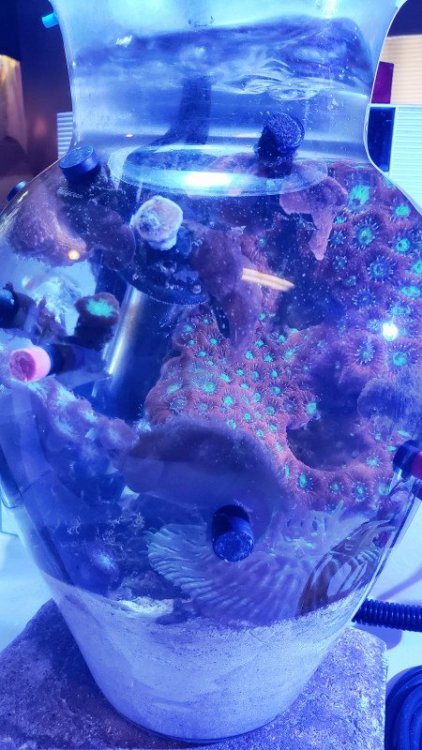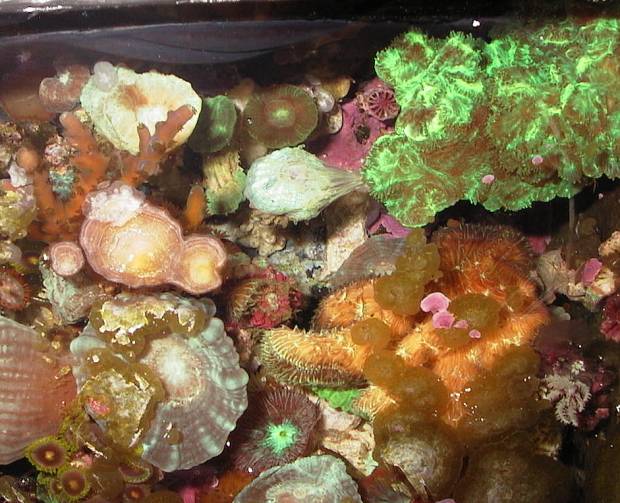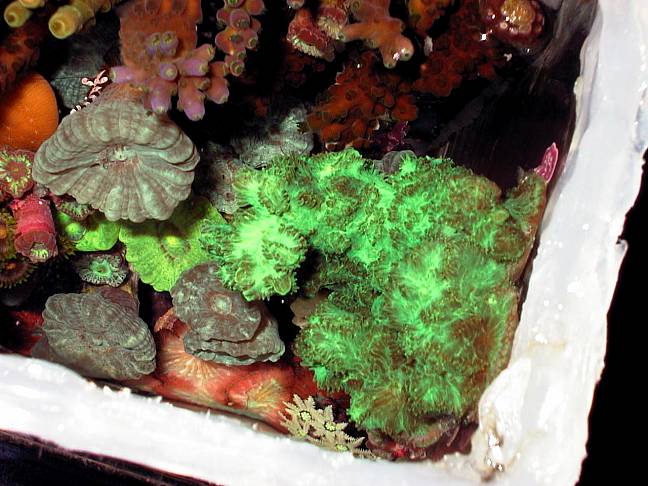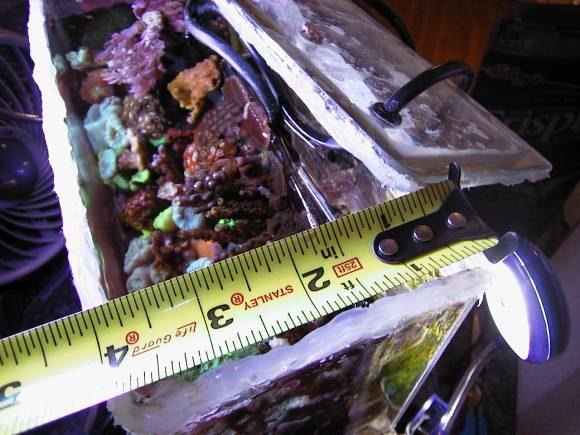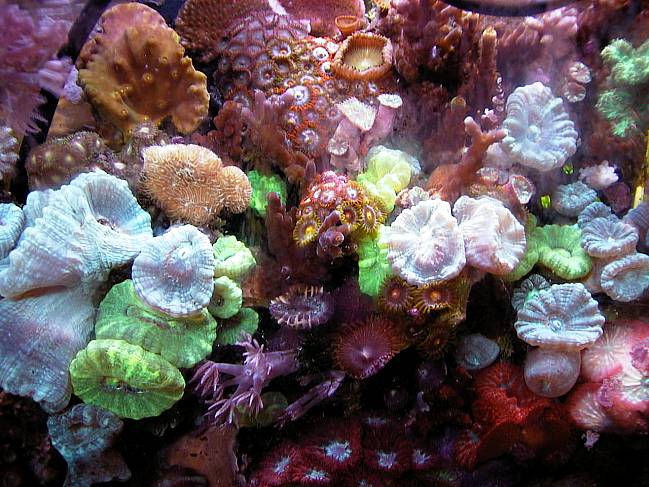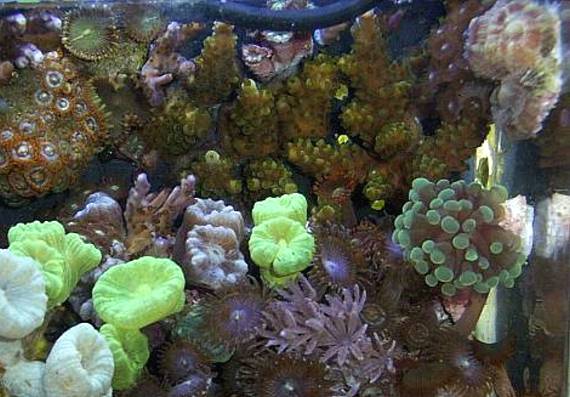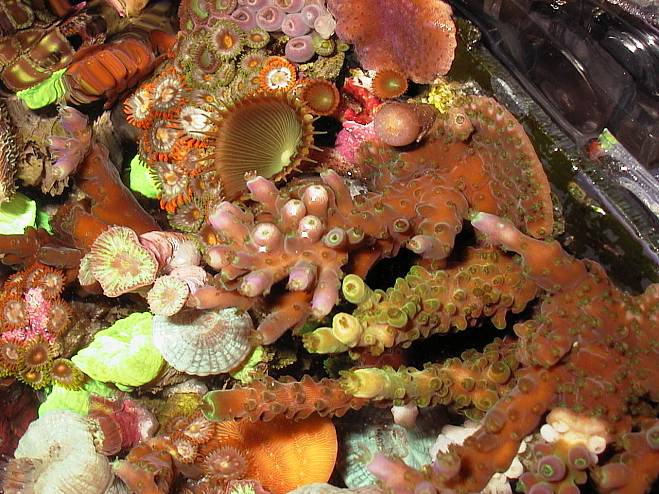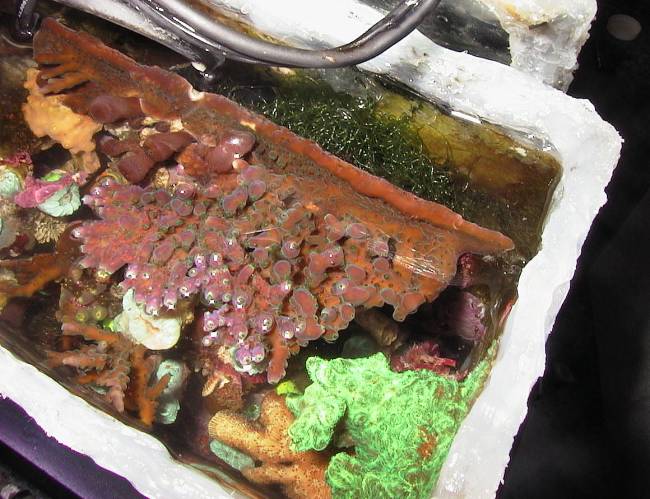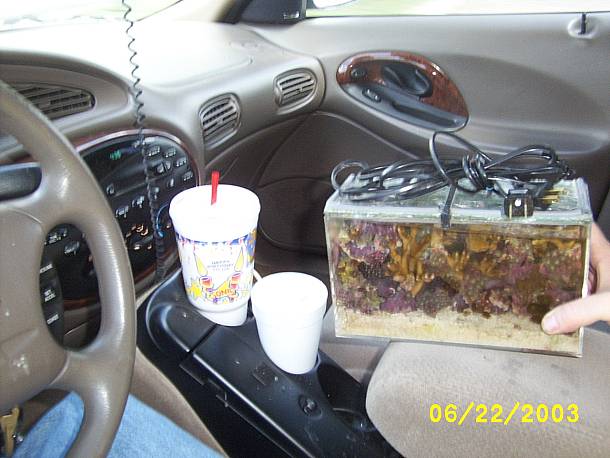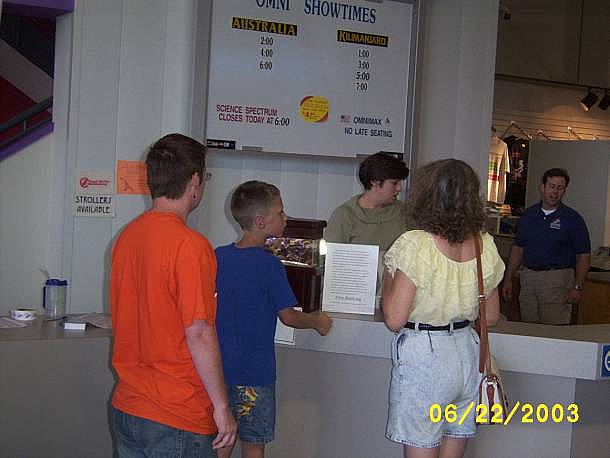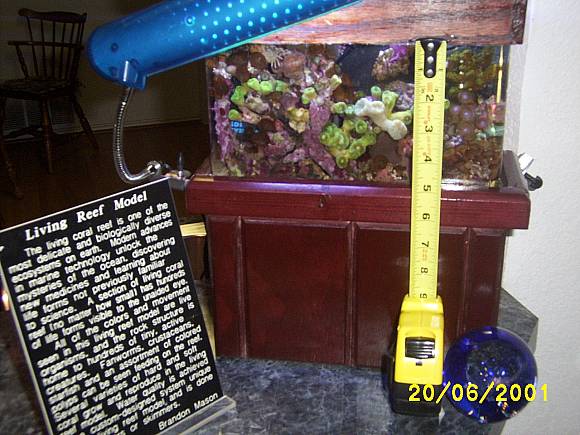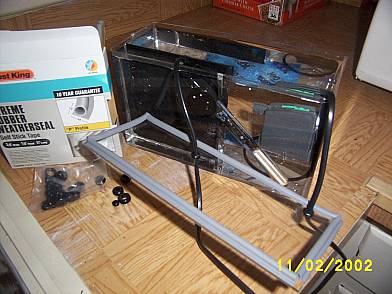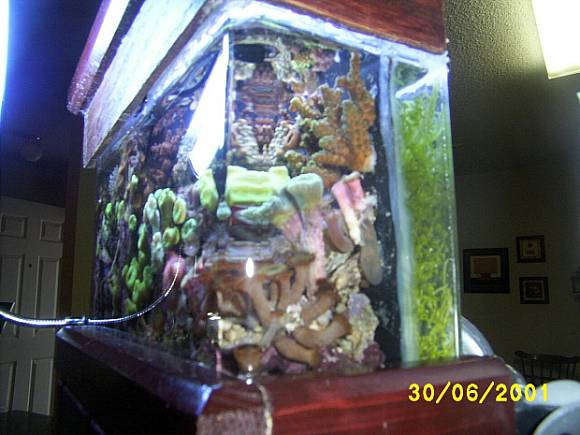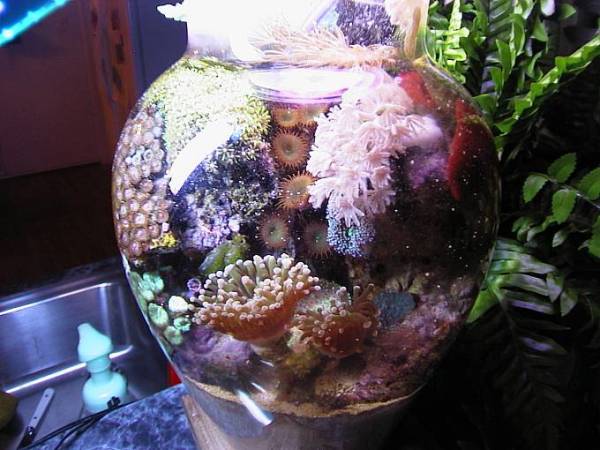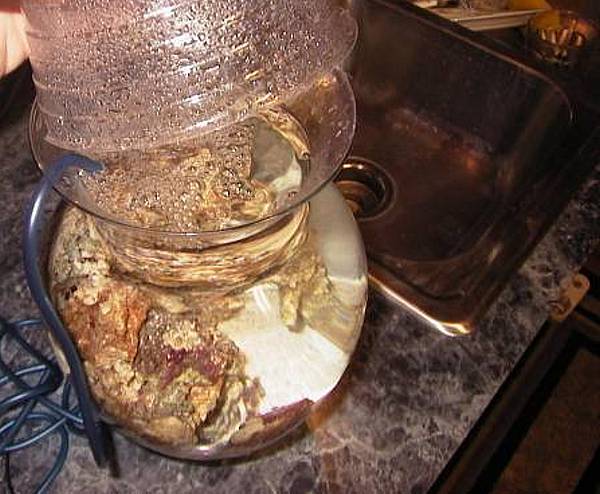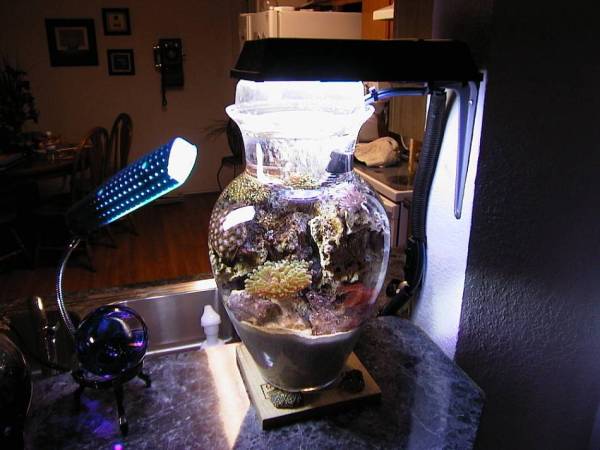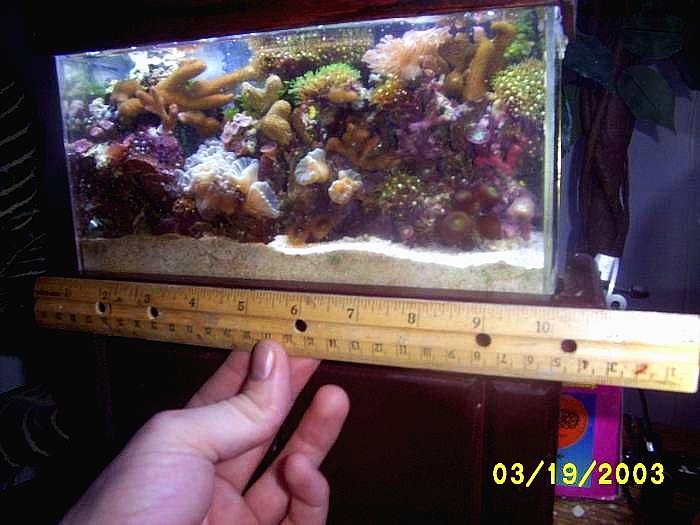

periphery
Senior Members-
Posts
50 -
Joined
-
Last visited
Content Type
Profiles
Forums
Events
Everything posted by periphery
-
Moontanman Howdy my vase is still alive. Glad you still post here / active that’s rare on forums. Longevity Given the # of pico reefs now running you can see I wasn’t messing with you in 09 we were legit able to spread the science. Taken about a month ago or two Zombie resurrection of a thread from 09 is legit if the same aquarium still exists Impact to today’s coral reef issues: we can keep most species alive in fishbowls in a common home, laypersons following a set order of ops Then repopulate lost areas of reefs by seeding from our terrestrial vessels. I have found out how to run micro reef tanks with no biological lifespan limit is the entire point, fancy gear is no longer needed. I’m brandon429 from the reef boards. https://www.reef2rainforest.com/2017/12/28/coral-magazine-new-issue-micro-reefs-inside-look/
-
well maybe I missed that point so I'll concede that, could have linked to them sooner. we are faster typers because of it though at least Im suprised you hadn't seen that site before, it's the oldest one on the entire internet about nano reefs but then again that's a really small niche of the hobby but it is growing, unless you look for it I guess no one would find it accidentally. Unfortunately mine are among the only palmtops/half gallons but in posting up how-to information Id like to start a new mini revolution just to carve my own niche whether or not they are the best is subjective...the next one I build will be purely for acorpora and no other coral so I'll check back with you to get your vote first hey tell me this, how did you guys keep stony corals alive in closed systems back in ~'75 without calcium and alk additives, or were people in the inner circle using limewater or dissolved high alkali solutions? Either way it wasn't too common knowledge, as every single reef tank I ever saw in the 80's featured the dead or stained/bleached corals. Now I find threads about guys with 25 year old hammer corals, that to me is a fantastic goal to have reached. I figure water changes wouldnt have been enough to keep the balances right, and nowadays there are tons of additives to choose from, so how did the pioneers of the hobby itself keep alkalinity and pH supported I'd love to know B
-
one of your claims was the heat would be too much. How come you didn't ask if I was using a fan larger than the reef>
-
most people have trouble getting coralline to grow in a macro reef so I'll take credit from ya wherever I can get it.
-
I was under the assumption I had given detail, and plenty of it. Hey nice to meet another page typer anyway Mike. I wonder how it would have turned out if you would have started out assuming it was real rather than fake, you'd at least be a better ambassador for your site. My whole point in this thread was that there are unique ways of doing reef business and you are making statements for sure about an item you have only seen two days ago, and met with a closed mind. When did that ever work as a scientific analysis I still haven't given up on you M B
-
dang man you get all mad im back at work now, have to be short again but I'll gear it up tonite. thanks for responding So we are back to square one, my video and all the pics are fake Post up a pic that you know is photoshopped of someone's reef, where they inserted into a VIDEO things that were not actually there or took away things that were. people don't just do that work for fun and if they understand the basic science li Dude, in the car that was just the reef alone as is. How the heck do you plumb a sealed reef where the only input is WIRES i showed in the VID very clearly. The stand and canopy were in the back seat. I was holding the reef, the lid is held in place by that black clamp. clear as day...
-
i have to type fast and minimal im at work but I want to stay in the discussion the feed is frozen foods. marine bioplankton with cyclopeeze and mysis lights are power compact 50 50 bulbs. on the vase reef its 2x9 watts plus a 13 watt up front to hit lower corals. The spacing is key, being close up it drives them very hard. Im thinking you didn't see the vid yet, two of the four questions are covered on that show... params: 0 nitrite and 0 ammonia, .023 sg, temp 78, average nitrate is 3 ppm maybe 8 on a bad water change week trace elements are covered by C balance, the ion additive two part. Nothing else is dosed because dosers aren't needed in correct reef tanks. to grow th coralline i get I must support calcium and alk beyond basic water changes. no time to list species, theres over twenty. pics cover that Merged post follows: Consecutive posts mergedalso, in the vid breakdown I show the front and backs of both reefs, the in and outgoing lines which clearly are not water conduits, be sure and check it again and hit pause from time to time to see the details it may cover more ground for us than just pics... Merged post follows: Consecutive posts mergedat lunch I have a bit more time. Im still used to typing in a defensive stance with you, it seems odd to constantly revalidate information that has been reviewed for years and years, being done by others (again, see the vid notes jeeze) but I do want you to see its possible and I'm not scamming. Guilty of heinous web self promotion? totally, daily, by the hour, near megalomaniacal--google brandon 429 and see what comes up But guilty of disseminating false reef science and false picture/vid documentation and tricking hundreds of people in person and thousands on the web? No way! Imagine how well worked out my lies would have to be to be able to type you basically a 4 page report to every question on the spot. You guys post sentences, I post paragraphs and itd be hard to make it all up or prevent 13 other knowledgeable posters from hammering me... So I didn't list alkalinity and ca++ measures because I don't need to know them. Its impossible to have coralline algae growth and SPS plating without strong measures of dissolved calcium and carbonate constituents. I did that testing in 2002 to find out what the correct dosing of C balance would be, and it's so repeatable I have not tested any tank, even new ones, and I've built about 20 honestly since then. i have listed this repeatable dosing schedule for sub gallon reefs no less than a thousand times across the web under b429 and on my vids micronutrient support is from the plankton quality. dissolution carries it into the water and then into polyps, along with direct heterotrophic uptake. there are large and consistent quantities of frozen food in my water column at most times, this is ideal and why the corals are so expanded and dense. If you fed your tank this much it would crash in a month and cost you a grand because you can't do big water changes like I can so you feed a little, uptake it, then feed a little more but not too much. I slurry in the whole tank and let it sit for a day then do a full water change 100% before it rots, my corals love it and no a full change does not hurt them, they adapt as I've said. Cyclopeeze is strong in iodine, so my molts from inverts are covered because this is a critical element to keep consistent, I just do it without direct dosing. The reason I have an answer to all your questions is because I want to promote these as a fascinating new way to grow corals and apply marine science in a practical, non exlcusive way, so that 30 years experience isn't the required tenure to know how to effectively evaluate someone's reef setup b
-
yea but you are claiming it's false for sure even after Ive posted several items, we're in an old fashioned titty twist and I can't let up first until you holla jj How about this. Go to nano-reef.com, where I've been a member since 2002 when I posted the first pics of this reefbowl on that site, and look at comparative tanks. No one is plumbing large reefs to small ones, this is the same in all nano tank forums so you agreed 2.5 is doable, how do you know a .5 isn't considering you aint tried neither! I'll keep finding ways to prove it to ya man, let me see if I can drudge up some active online references gimme a sec
-
All I can do is swear to you they are self contained and direct you to older threads that have more discussion. Now remember I said I'm doing 2-3x water changes per week because I feed heavily like the vid shows... The system can go a whole week+ without them if I'm gone on vacation, as long as its not fed, so I really do understand your search for water table support because you are right, without an external systems -or- rather frequent changes it would go eutrophic and die in a bed of algae. Now water changes every day would be lame, any good reef needs to have stand alone ability to some degree to be legitimate...Im just saying I spend about 15 mins a week on total maintenance, because the size makes it so quick, so that's still less work than a full reef and that's why these rascals rock n roll@! So there is no external plumbing, but the surface area of the live rock, relative to bioloading (which is meager when coming from inverts compared to even one single fish) there is never ammonia or nitrite. Nitrate hovers around 5 ppm around water changes, and if bright reefs sit in that measure too long algae will develop, so you can see I have found a steady state between a maximum no3 rating of 5 ppm and the timing of water changes, I do see where you were looking for exchange though and this is the mechanism. Thanks for chiming back in, what kind of tanks do you keep man? I would gladly look at your pics and vid too, you are helping me get massive view counts for this thread yay!
-
goldwing I like your hobbies and interests description, my video has all the animals you've listed and I keep shrimp too! It's currently on the front page under coral growth vessels just a heads up
-
Well pico reefs are a great magnet to pull you into science nice to meet you. If you want to try it I recommend starting with a basic 2.5 gallon tank like moon mentioned earlier. They are still really small, but are more stable and personally I think someone should replicate my subdivision idea inside one, where you seal it but use an internal refugium for oxygen production. If you haven't kept saltwater before I still recommend something even larger like a 5 gallon tank, because salinity topoff will be the first challenge to meet when making your tanks progressively smaller and smaller. Chris Brightwell (I think it's Chris) has a nano reefs book that's in the stores but it doesnt cover pico reefs, it's better to start in saltwater larger anyway because really man one salinity slip up and your whole tank is gone. You'll want practice making up, balancing and temping change water before you do tanks this small, but if you've had that kind of practice already the size ability is based on the evaporation restriction of the tank. The sealed tanks are tricky to build but run well with basic maintenance, but the vase reefs can be built from walmart and many are doing it on the web. See frontpage of nano-reef.com for example. Also, the webboards is where I think you should start. There's nothing in books you can't get free on the web, with live feedback, and if you search you will likely find the real author to give you feedback! As you can see people are very passionate about marine care in cyberspace, they are the protectors of the craft eh some even have a tatoo of an isosceles triangle and sickle on their forearm (insert druid emoticon) he he but with the live time question feedback, you can't beat web boards. I recommend Reefs.org and Nano-reefs as two great places to build a tank from
-
im all proofed out do you like these now or what.
-
I was gonna bombard you all with this stuff anyway> here's mesentery stinging from the hydnophora. He takes out a head every few months, and these dead caulastrea heads are now overtaken by sps growth, but the hydophora had to clear the way or caulastra would sting and kill the sps! See how cool that is, you have to be my good friend now I accept paypal and hey your cool man in my book mastercard. When is the last time you saw someone grow hydnophora, or any other sps coral from the side of their aquarium glass and not on the rocks. In terms of months, how many does it take to double a hyd's biomass up against the glass? Cuz after we establish months, I'm puttin up some stuff to move you into years and after that your watch is in my pocket and your necktie is missing heh
-
I hope you are coming around now my thumbs hurt I hand-glued every single one of these frags, and I performed delicate coral surgery in my garage with a fairly decent setup I might add to remove most of them from larger colonies which I then sell back. I use good sterile technique then an old fashioned dremel tool to shape them up. Then I use curved medical hemostats, a really sick $60 pair, to position every frag next to habitable neighbors in prediction of long term growth. There is about $600 in frags in the picture above, again from the same mini reef line I invented in 2001. Yes there are some physical contacts that cause death, but on a 1/120th scale in this system it's just new substrate for coral growth or new calcification by benthic organisms or various worms...it truly is a living reef model and i again claim it's the bees knees of saltwater aquariums. Just type me a list of 20 questions man I'll post the answers in no delay. b
-
also to answer your specific request the total work is two 100% water changes per week on each. about three gallons I guess of ready made water. I drain each reef through tiny corked siphon holes, this is where I dose and add feed as well without having to strip the tanks open. The coralline is scraped monthly because I can't keep it from cementing the whole tank together. You type a lot of sentences...ask me a few q's man see if my answers are lacking before hostility jeeze bro you act like Im canadian this is a different reef in the pic. I have an armada of them, they are being repeated on the web elsewhere don't know what else to submit but I'd like to keep chatting. If I can't convince you that you need one of these in your car as a portable reef then I've done nothing for this hobby. Merged post follows: Consecutive posts mergedallelopathic desensitization is why they don't sting each other. it happens slowly in large reefs, sometimes never due to skimming, and it's accelerated in pico aquaria. this is informative niceman statement number 16 for this thread btw The real risk, since you haven't asked, is knocking them over or your home ac shutting off, I've fried em like that once er twice. Barring hardware issues, I employ specific mechanisms to prevent old tank syndrome such as sand bed maintenance through specific feed input. There are certain foods that build up in a sandbed and some that don't, we could chat about that it has implications in larger tanks as well Merged post follows: Consecutive posts mergedMoon I'd really like to see your tanks, I bet they rock on the large scale. You guys with the larger setups get the fish and gorgonians and I miss them.
-
those are fair assertions and thank you for responding chatting alone was getting boring...ok so the video no good. You into music man? we could pick a bad tune or thump some speed drums to wake the neighbors he he These are over four years old though. For a gallon vase and .5 gallon reef, how much time will it take for you to not take a guess they are short lived...and, what will be the mechanism that puts them into immediate decline, and why will that come about in a micro reef I honestly want to know, don't want to lose these. Corals grow and reproduce in them, either thats the case of I'm a flat out liar but dig a little more before you go there man! lol I know you've kept reefs for a long time so I value your assessment over most I'm just saying our conversation has already shifted from impossible to must-be-short lived. Answer this for me: These sequential time pics show week 11 in acropora valida plug insertion (where I break off tips of whole acropora colonies) and their growth into self-shaped tabular forms in week 105. Little fractal wedges, just like the car-sized ones in nature, but 3 inches. That already puts the tank in the top 20 percent of all reefkeeping successes, SPS are not common yet in bare bones setups. This represents positive growth of scleractinia, and tricky ones at that (top reefkeeping is acropora). Why would a reef instantly stop positive, oligotrophic runnings provided all hardware issues are constant? If you know something I don't about picos Id like your input so my displays will survive. there are some corals that can touch forever and ever without caring, why didn't you just ask which ones those are... I purposely stock like that. Zoanthids constantly touch all corals in my tank, it's been happening for four years, and there are about 5 other pairs, so again man these are things I should be informing you about apparently and not defending
-
translocation of photosynthate is my vote as well, as stated above there are osmotic gradient distributions so common in cell biology, vacuole or gated pathways for the nutrients to make it's way and who knows what they will find in the future. I do think that one interesting notes is that they don't store up nutrients in specialized structures like plants and roots, tubers etc. other than in tissue abundance, the relationship needs to be ongoing and consistent unless you are dealing with a highly heterotrophic species that can capture it's own food. Merged post follows: Consecutive posts merged
-
-
still no takers...tough crowd, tough crowd So I travel around with this reef, to colleges (Texas tech/amarillo area), high schools and public exhibits and let people pick it up and hold it while it's running to show them it weights 5 lbs full with stand. depending on where we are they take time identifying any of the 20 genera that are thriving in this tank and we discuss ecology. Many times I take cuttings, frags etx in separate containers to let them hold, or examine under a stereo microscope. The pic in my car is me at a stoplight watching my palmtop reef pulse in the sunshine. guy behind me had to honk I don't charge for any of it, I do it for fun but it's nice to know the option is there. I once sold the SPS version of the square reef at a show for 800 dollars on about a 240 dollar stocking investment. A 1/2 gallon complete reef for 800 my lucky day This kid picked it up just after this shot they tend to do it with no permission when in public showings. Its been on display at the mall, pet shops and a lot of places on the web. other than just novely, it really gets the discussion going as to why the old school ways aren't exclusive, only ways into the reefkeeping guild. in order to keep these you have to be able to know and explain what corals need to thrive...theres still room to carve new paths, with same or better results I'd guess...and with far simpler technology, a fish bowl for example It's just new science and it draws rather polar conclusions which is all very interesting to me. someone's got to be a fishtank person around here speak up already heh
-
actual compression of the sciatic nerve is my vote, not involving circulation...at least that will give you something to look on mdweb or something, hope you get better! Merged post follows: Consecutive posts mergedalso if the knee isn't bent to relieve pressure I've read that popliteal nerve compression causes similar issues...the popliteal is still a branch off the sciatic so it may be the s in either situation is just a guess but I noticed you had no responses....
-
see in this pic above there is an internal subdivision where marine plants receive 24x7 light, for steroid-like photosynthesis. Since the tiny reef system is sealed to prevent specific gravity concentration, oxygen and carbon dioxide must be dealt with. thank goodness for respiration on the small scale! Merged post follows: Consecutive posts mergedhey now guys you can't get all skeptical on a brother and then not follow up I am providing every bit of science to prove they are real so i want you to follow up! I have about a thousand different pictures, non-photoshopped, with internet threads that range back to 2001 to show you they are real. I just thought you'd like to see coral production that is well outside the norm, that's why I posted here and on several other forums. Originally I just posted on aquarium sites but this is hardcore biology at work so I thought it fits on the science forums as well. periphery
-
also this is achieved by adding corals slowly. they are large in this tank because they grew that way, they were implanted as tiny tiny frags. So they have time to reduce nettling, chemical allelopathy, but I spend time repositioning them every few weeks if needed. After a year or so a steady-state develops, and I let individuals sting others to create new turf and replicate large scale reef activity. Additionally, coralline algae and benthic microorganism growth shown in the vid is my hopeful submission to you man!! These tanks do good for biology and captive husbandry as a whole because they make known strong principles of science by catching the eye and starting discussion (or dissention he he) in the pic below, the square tank is the reef from the top pic! This shows the design__standard aquarium pump minijet 14, standard heater digital, a glass lid with weatherstripping and the cord throughput was made by cutting the lines, running them through grommets in the lid, and then resoldering them back to the pump and heater. sick huh thank you guys b
-
The real truth is, if you keep the bioloading associated with fish husbandry out of the equation, the entire equation of reef tank science changes. No skimmer needed, you can employ internal subdivisions of the tank to grow plants, macro algae, and in that photosynthetic moment you are getting oxygen molecules and binding nitrate ones at the front of the train. If it happens in a 70 gallon it's the same as in a .75 gallon which the one above literally is...also these reefs are either sealed or evaporation restricted in some way, that is what makes it doable at this scale. I hope the fact this reef above is totally sealed and does not evaporate zings you more than the visual effects I made by using individual polyp heads and taking the time to hemostat-position about a hundred of them to create the display. Imagine the suprise of the people I let pick it up and hold it while it's running, freak of the century man, sheck the video out! This is my favorite thread of the bazillion splashed around about these reefs if i can convince peers i am satisfied b here's more pics
-
you guys saw the video link above the pic right? how do you photoshop live vid and you can tell its shot with a crappy camcorder what if i told you these are the bees knees of micro scleractinian habitats, would you belive me ~ its in youtube, under "globe ecosystem" link one
-

